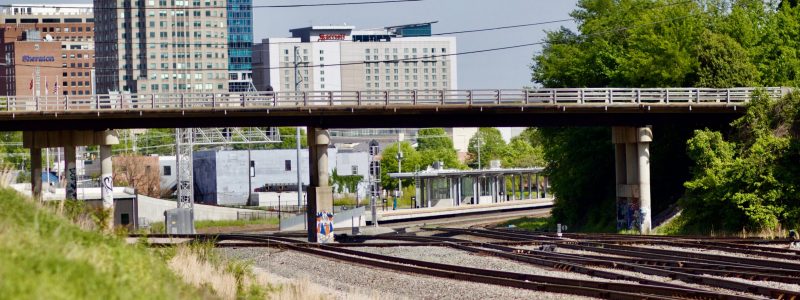
Raleigh’s Boylan Avenue Bridge, which extends over the North Carolina Railroad, is often a destination for locals and visitors who want to capture an image of the city’s skyline. But, did you know that the Boylan Avenue Bridge has an interesting history beyond providing a vista for the ever-growing capital city?
This Birdseye View illustration, circa 1872, is a great way to see the Boylan Wye, where the North Carolina Railroad, and what is now the CSX Railroad, intersect.
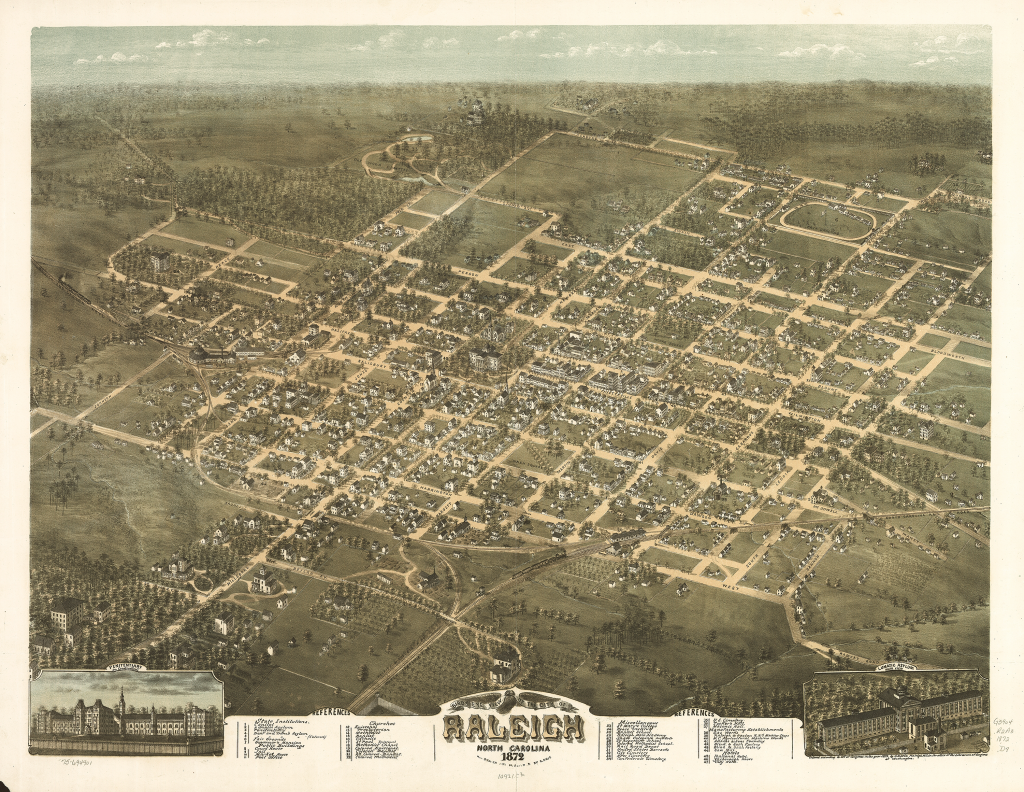
The Boylan Avenue Bridge was one of the first bridges built to extend over the North Carolina Railroad. The original bridge structure was primarily wooden.
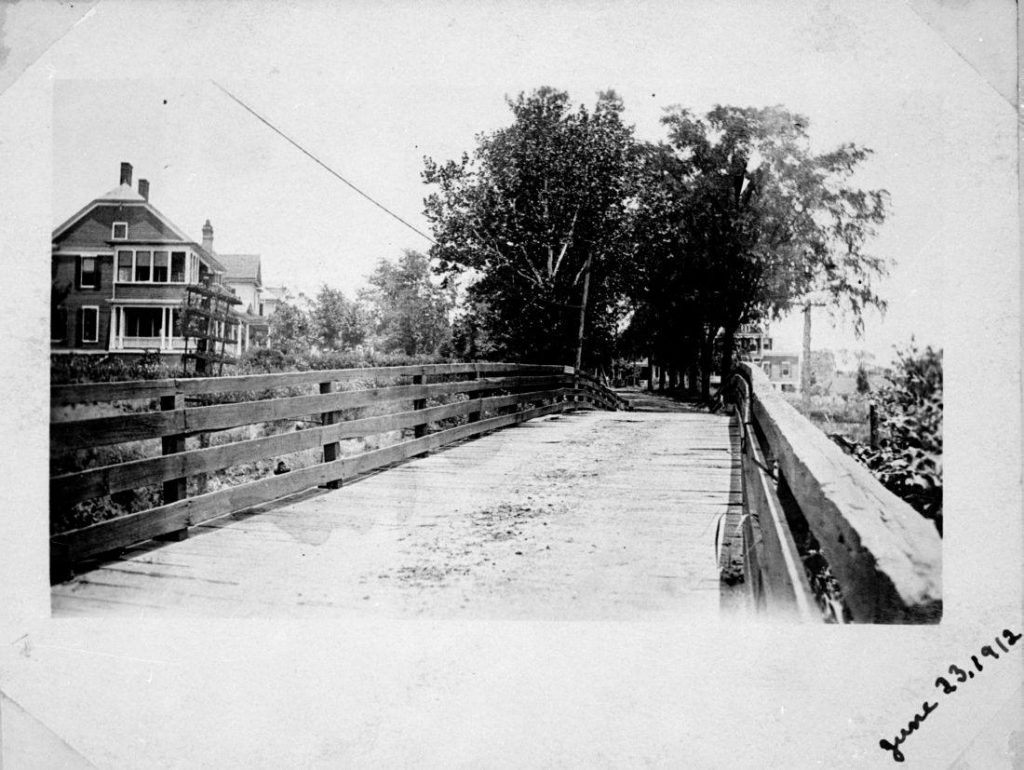
The Seaboard Airline Railroad (SAL), now CSX (pictured on the left), runs parallel with the North Carolina Railroad, diverging after running under the Boylan Avenue Bridge. At the time this photo was taken, trains often carried both passengers and freight. In 1913, the wooden bridge was demolished, and a steel truss bridge was built in its place.
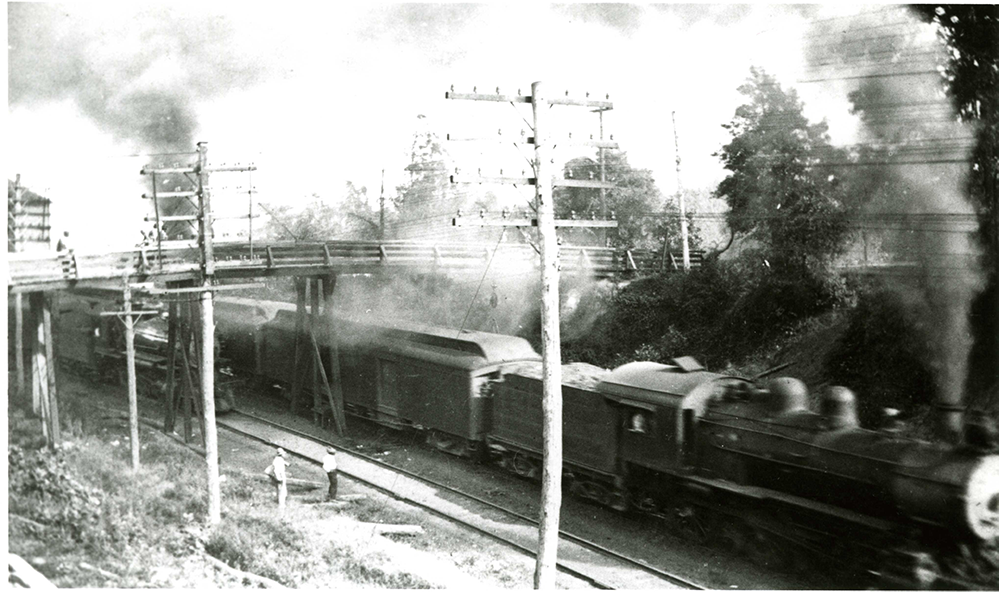
Like the Boylan Avenue Bridge, the Boylan Tower was an iconic structure in its own right. The tower, a two-story wooden structure, housed the mechanics that controlled the track interlocking.
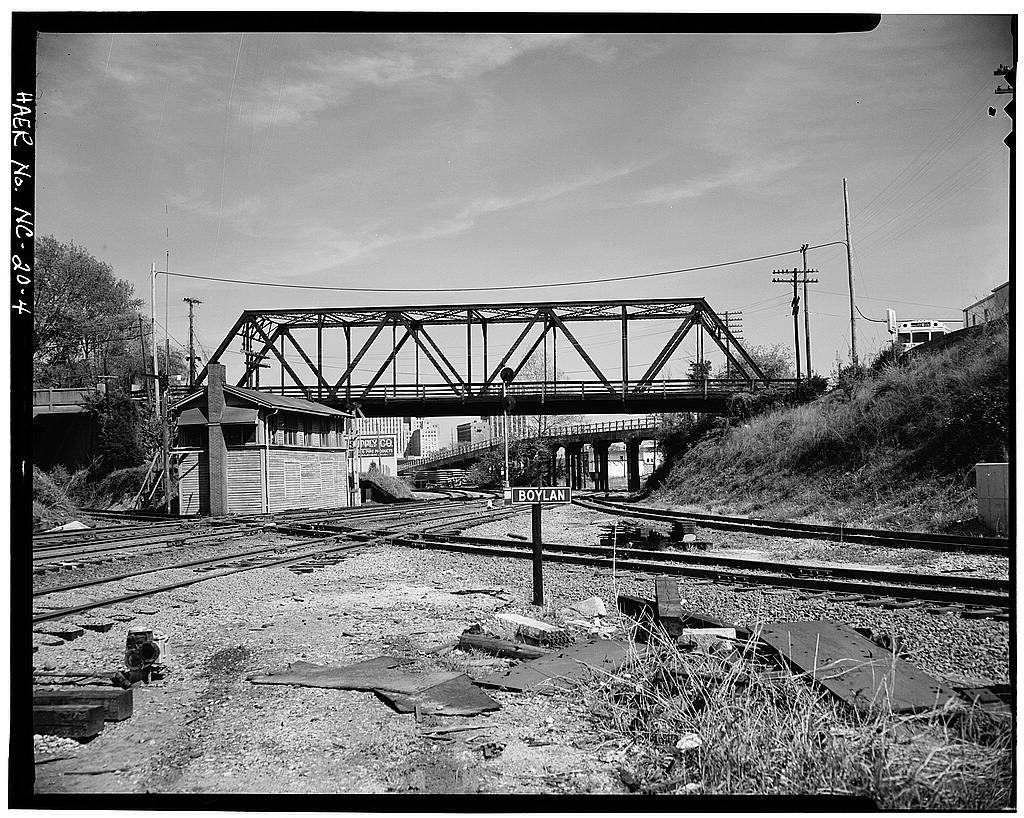
An employee would receive orders from trains and manually push or pull the Armstrong levers that would move switches on the tracks, enabling trains to shift to another track.
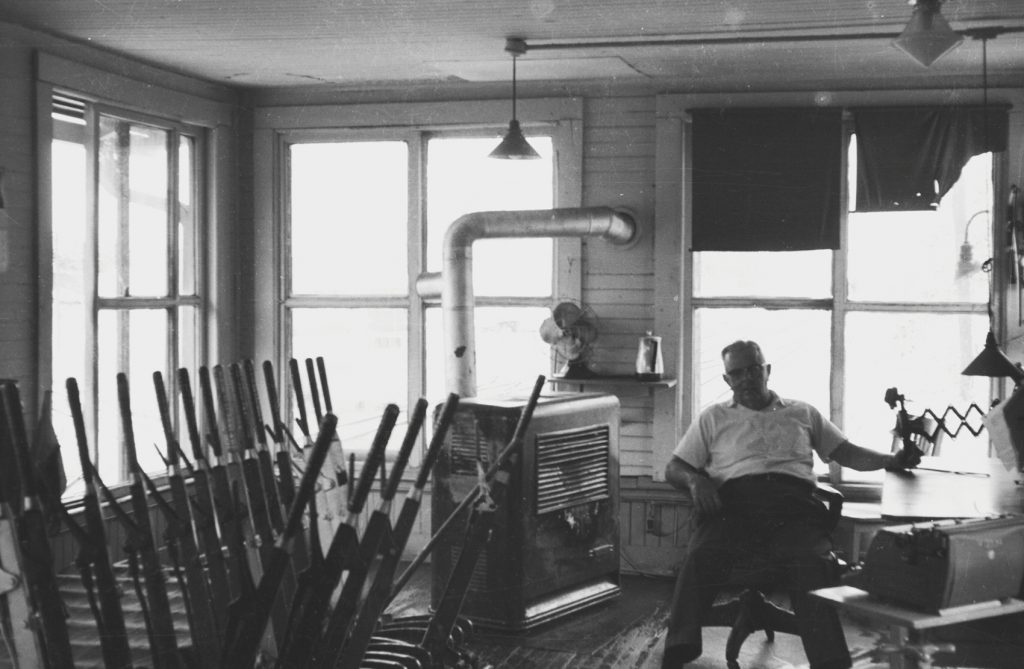
Around 1978, the steel truss road bridge closed to vehicle traffic, and was eventually demolished, with the current bridge being constructed in 1982.

The current bridge is a steel girder and concrete deck highway bridge with multiple piers located within the NCRR corridor. More recently, crash walls were added as a result of the reconfiguration of the NCRR and CSX tracks under the bridge, in order to allow for railroad access to the new Raleigh Union Station.
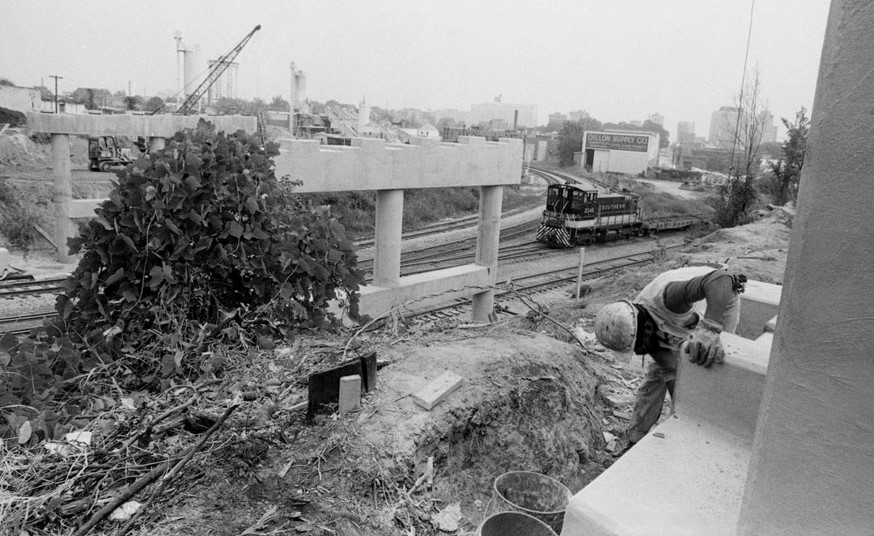
The Boylan Avenue Bridge continues to be an iconic destination in the city as well as an important link between downtown Raleigh and the Boylan Heights neighborhood.
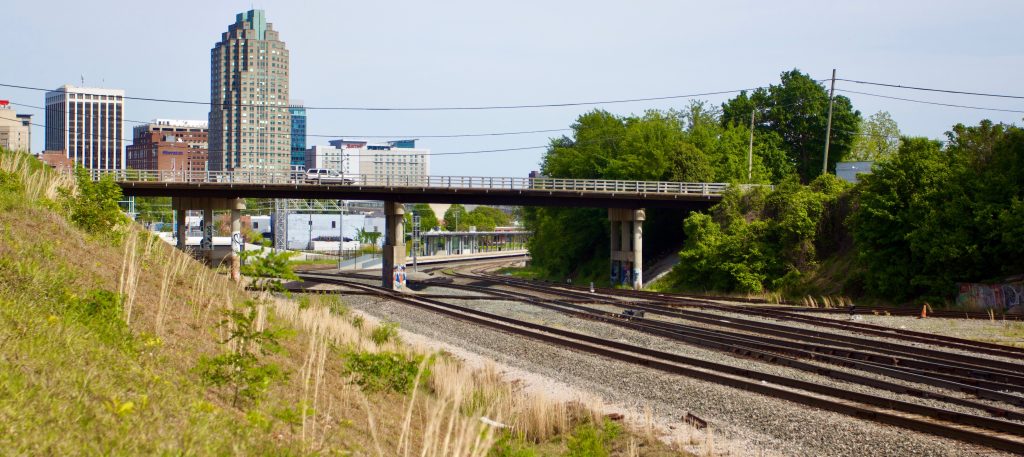
Approximately 20-30 freight trains pass under the Boylan Bridge each week, providing service to business and industry located in North Carolina, as well as the rest of the country. Ten Amtrak trains also run under the bridge each day, offering regular passenger service between Raleigh and Charlotte, and connections to multiple routes between Miami, Savannah, New Orleans and New York.